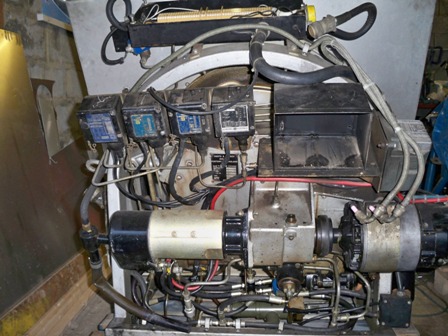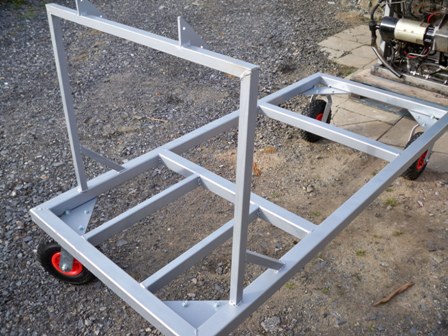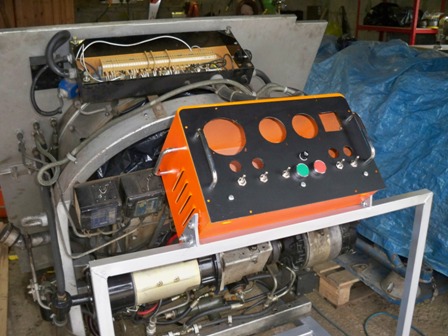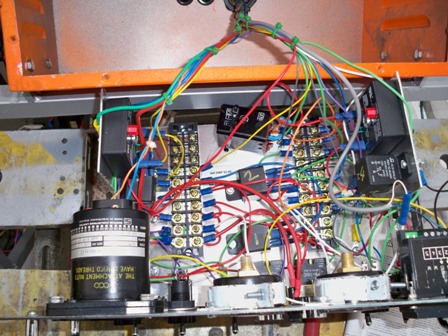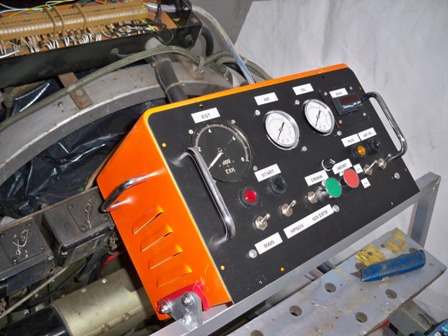This rather unusual looking engine is a Hants and Sussex Stad 250 air producer. It is identical to the gas turbine in my air start cart and I have obtained it with the sole purpose of providing additional air to start the RB211. I had a suspicion that I may need two air producers to spool up the RB211 to the required rpm and after a few tests this indeed proved to be the case.
This turbine engine is essentially the Engine Change Unit (ECU) from the start cart and as such does not have the associated ancillaries such as the exhaust muffler, fuel tank and control panel. I will have to build all these up and mount the engine on a wheeled frame.
Originally the engine would have been in a trolley as mentioned and these were used by the RAF to start aircraft such as the Buccaneer or the Nimrod.It is rated at 250 HP, hence the name, and produces about 120 lbs of air per min at 50 psi. They are not the greenest of engines in terms of fuel efficency and easily drink 10 gallons of Jet A1/kerosene per start cycle that usually lasts about 15 mins! As I understand it they were used as an alternative/replacement for the earlier Palouste air starters although I could be wrong!
Here’s the engine as it arrived. Unfortunately the ignition exciter is U/S although I might be able to repair it.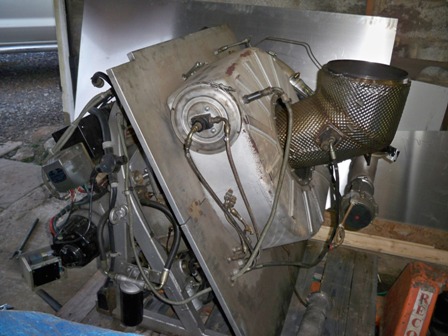
Below is the oversized compressor, exhaust, air dump valve (still wrapped up) and the air-delivery pipe. There’s not much to it really, a single impellor with a centrifugal compressor and a turbine.
Unlike most Stads this unit is rather unusual as it is mounted at 45 degrees making it awkward to manoeuvre onto a pallet. Here’s the rear view with the ignitor box removed, to the left are the air pressure switches and below is the starter motor and to the right the alternator.
I wil have to get this engine sorted before I’ll be able to do much more with the Rb211. First up will be to repair the ignitor box then a frame followed by a control box. Keep watching!
APRIL 2012
As this engine is just an ECU (Engine Change Unit) I’m going to need a frame with wheels it to move it around. I’ve used a few sections of 50×50 mm box section welded up to make the base and a support for the control box. Four heavy duty caster wheels are fitted to each corner. Even though they are rated at 150 kg each I can see they are struggling to take the weight and not as good as I expected over rough ground. Here’s the frame after a coat of primer.
Next up is the control box. For the box chassis I am using an old electronic unit box, not sure what it was for originally but it came from Bruce of GB Airspares fame in Norwich. It’s just about the right size and comes complete with handles.
My next job is to fit the various instruments, switches and electronics. The wiring interfaces with a large terminal block on the engine. Fortunately I have a circuit diagram though some of the pin-outs are incorrect.
The completed box just needs the air and oil pressure hoses to be fitted. I have replaced the original digital counter ( a cheap effort from China that did not work!) with a small tachometer, slightly more expensive but it works.
The original tachometer instrument uses a system similar to a car speedometer with a cable drive from the gearbox. I have not been able to find an original gauge so I have had to use a small optical sensor that picks up the rotation of the alternator shaft. The tachometer does the maths and the reading we get should be the actual speed of the turbine rotating assembly. Credit to Adrian Bennett for suggesting this so if it doesn’t work I’ll blame him!
Next job is to connect up the remaining fuel lines plus the tank and hopefully we should have another running air-start cart.

